Fun Facts About the Largest Birds
Bird watching is a fun and relaxing hobby for millions of people. But how would you react if you saw a four-foot bird swooping out of the sky towards you while watching a family of robins play? Or what would you do if a six-foot bird running 30 miles per hour suddenly appeared in your binoculars?
You’d probably be excited knowing that you just saw some of the biggest birds in the world. While many of these birds can be reclusive or even hard to spot, understanding these fun facts can help you appreciate the sheer diversity and excitement that these birds bring to the world.
What is the Largest Bird in the World?

If you ask any sixth-grader about the biggest bird in the world, they will answer quickly enough: the ostrich. Well-known for its size and strange appearance, the ostrich stands over 7-9 feet tall and can weigh between 220 to 330 pounds. No other bird even comes close to its sheer size.
While the ostrich is not a bird of prey, they are somewhat dangerous because of its sheer size and strength. A single kick from an ostrich can be deadly if it lands appropriately, and many people get severely injured every year trying to approach them. So it’s best to give the king of the birds some respectful distance.
What is the Largest Bird in North America?
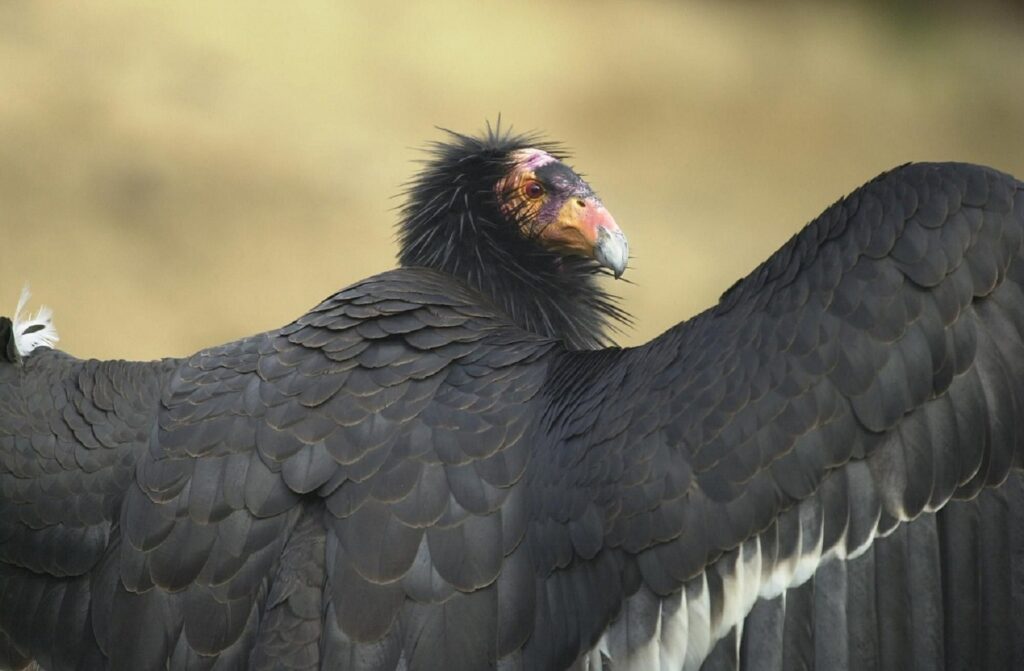
While North America does have a few flightless birds, its largest bird of any type is easily the California Condor. This long-living bird (up to 60 years or more) is known to have a wingspan of over 9.5 feet and weighs around 20 pounds. While not the heaviest bird, their sheer size makes up for it.
While the Condor isn’t precisely an attractive bird in some ways, it is pretty unique in other ways. For example, it can fly over 200 miles a day while expending minimal energy thanks to its vast wings. They’re also very social birds that play, preen, and hunt with their large extended families.
What is the Largest Bird in South America?
South America’s largest bird looks a bit like a miniature ostrich and has some similar traits. The Southern Rhea is flightless, known to run very fast, and can kick with great power. However, they also use their wings like an airplane rudder while running to make incredibly sharp turns.
They typically stand up to five feet tall and weigh up to 66 pounds, though usually closer to 40-50. This makes them a bit less imposing than the ostrich, and they are known to run from predators more regularly rather than fight. They also live a more active life and continually move while eating.
What is the Largest Bird in Europe?
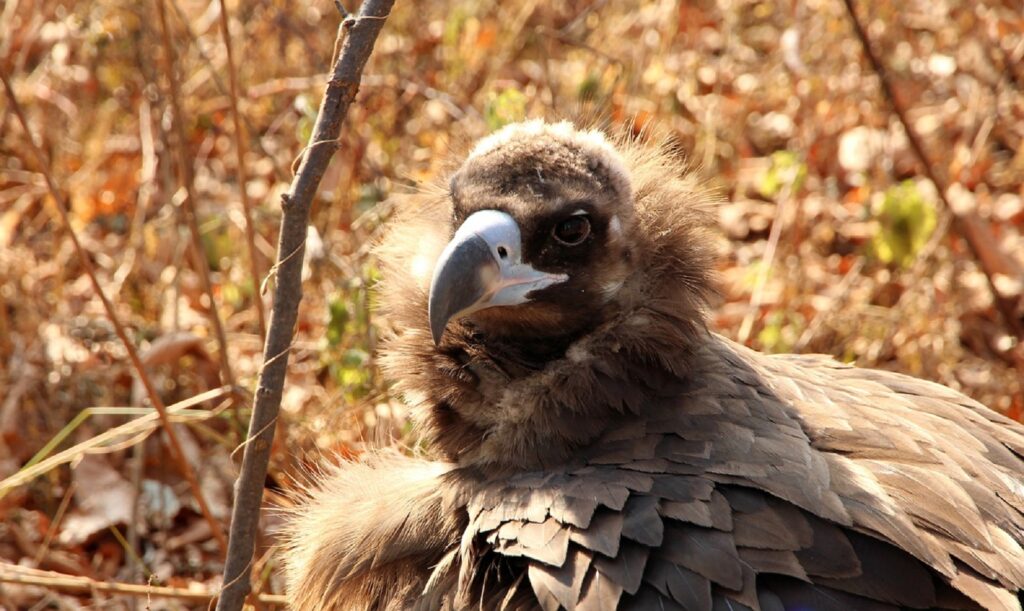
The Cinereous Vulture is similar to the California Condor in a few different ways. Firstly, it’s a bird of prey with a nearly 9.5-foot wingspan. Secondly, it’s not exactly attractive but has some fascinating traits that make it one of Europe’s most exciting birds.
For example, it is known to fly as high as 27,800 feet or more, thanks to a unique blood system that maximizes oxygen efficiency. It uses this height to crack open tortoise shells, though, like most vultures, the Cinereous species is an opportunistic eater that often prefers carrion.
What is the Largest Bird in Asia?
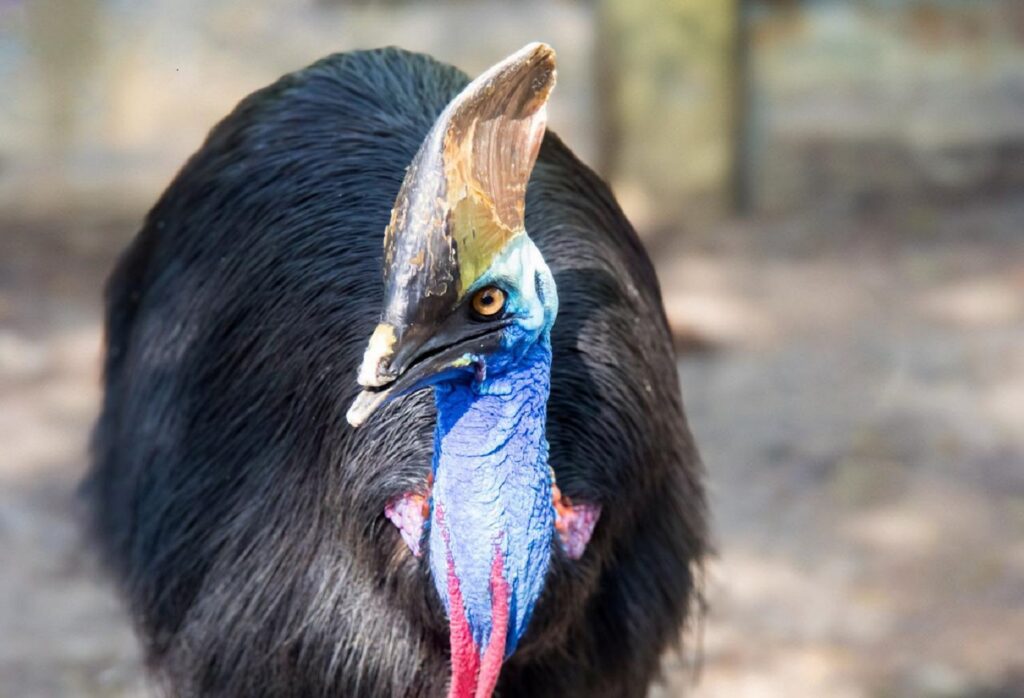
The Southern Cassowary is one of three living species left on the planet and is the largest of these birds. It spreads throughout tropical rainforests throughout Asia and is known for looking very prehistoric. They can stand up to six feet tall and are the third-tallest birds on the planet.
They’re also the second-heaviest, weighing between 141-167 pounds on average. Interestingly, the females of the species typically weigh more than the males. The Cassowary plays an integral part in distributing seeds throughout the rainforest through its fecal matter.
What is the Largest Bird in Africa?
Well, here comes the ostrich again: it is Africa’s biggest bird by far. Let’s highlight a few other fun facts that we missed earlier: the ostrich can run up to 45 miles per hour and cover 15 feet in a single stride. They may also turn and fight a predator and can even kill lions with a single strike.
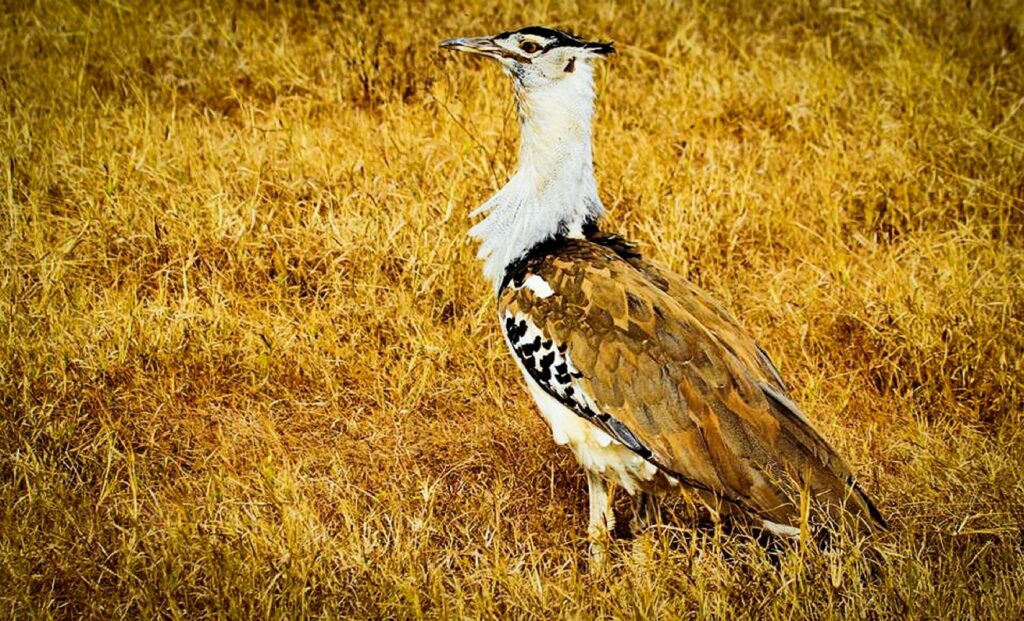
As a bonus, let’s highlight Africa’s heaviest flying bird, the Kori Bustard. The Bustard can weigh up to 41 pounds and is known to eat insects, Acacia tree gum, berries, lizards, and snakes. They prefer walking due to their bulk but can fly quickly and majestically when threatened.
What is the Largest Bird in Australia?
Australia is home to many ostriches, meaning it is obviously the most enormous bird on the continent. However, instead of talking more about this beast, let’s take a look at a similar flightless bird, the Emu. The second-largest living bird is prominent throughout Australia and other continents.
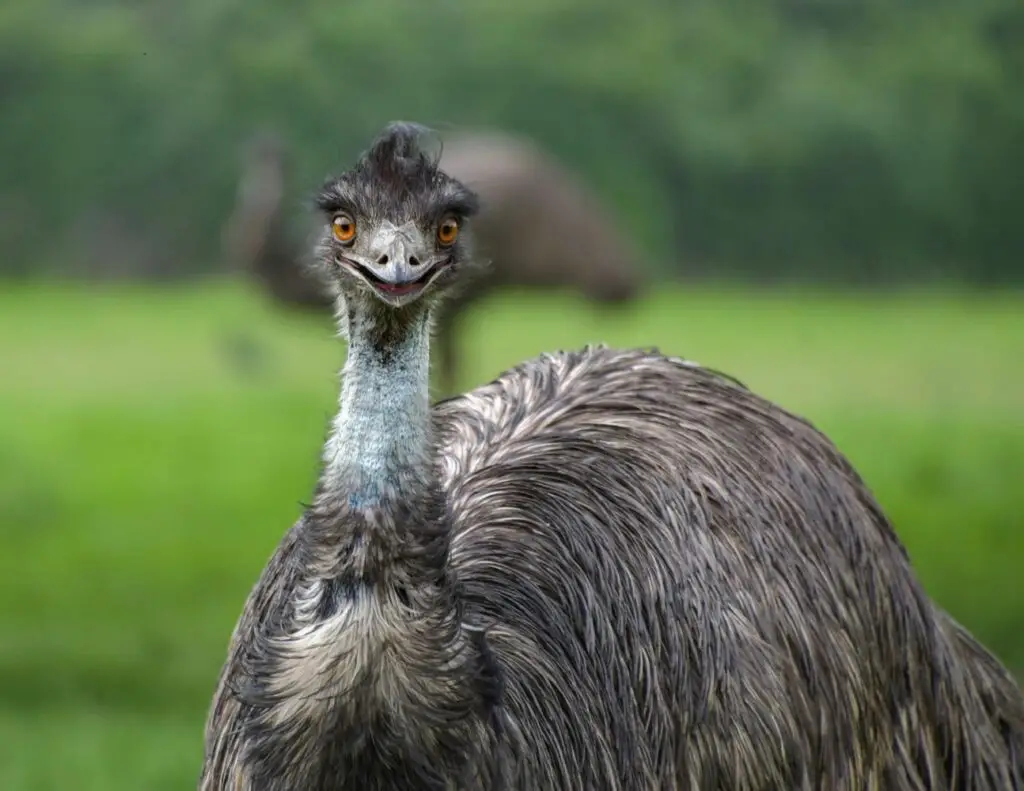
It is the only living member of the Dromaiidae family and stands over five feet tall and weighs about 100 pounds. This smaller size makes it more prone to flight than the ostrich, as it can run over 30 miles per hour. It can still kick quite hard when necessary, however. Their booming mating call is a common outdoor sound throughout Australia.
What is the Largest Bird in Antarctica?
Here’s a fact that might surprise you: over 46 different bird species live in and around Antarctica. They mostly live on the ice fringes around the polar continent, feasting on fish and other small sea life. The Wandering Albatross is the largest and probably most common in Antarctica of these birds.
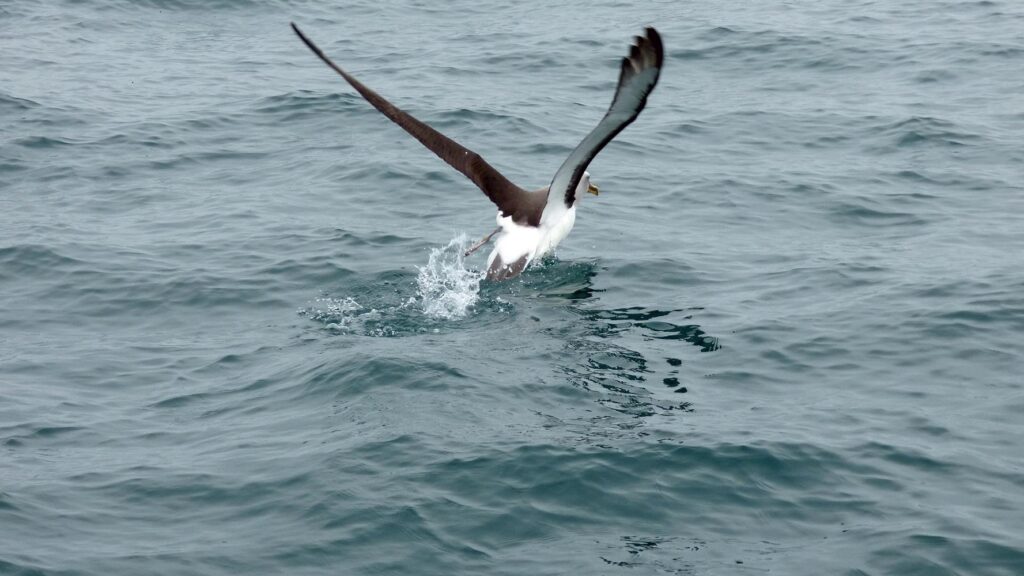
With a wingspan of over 12 feet and a weight of 18 to 26 pounds, the Albatross looks a lot like a very large seagull. They have a very low reproductive rate, laying one egg every two years. However, they live over 60 years and have a territory covering thousands of square miles of ocean.
Which Bird Has the Largest Wingspan?
Our friend, the Wandering Albatross, makes a quick return! With a wingspan of over 12.1 feet, they beat out the Great White Pelican at 11.8 feet. Some unverified accounts even claim that this species even gets a wingspan of up to 17 feet, but those reports are best taken with a grain of salt.
Those amazing wings let the Wandering Albatross catch wind gusts and soar for many miles without flapping their wings. As a result, they can hunt over amazingly long areas and can travel to different continents while stopping only to eat or briefly float on the ocean.
What is the Largest Flying Bird in the World?
When it comes to flying birds, the Wandering Albatross remains the biggest. With a wingspan of over 12 feet, it remains an impressive bird to see on the wing. Yet, amazingly, they spend almost all of their life in the air and only land to feed or breed, making them a common sight on cruise ships.
Amazingly, there are several other Albatross species that are impressively sized on their own. For example, both the Southern Royal and Tristan Albatross have a wingspan of 11.5 feet, while the Amsterdam (11.15 feet), Antipodean (10.8 feet), and Northern Royal (10.5 feet) Albatrosses aren’t far behind.
What is the Largest Bird of Prey?
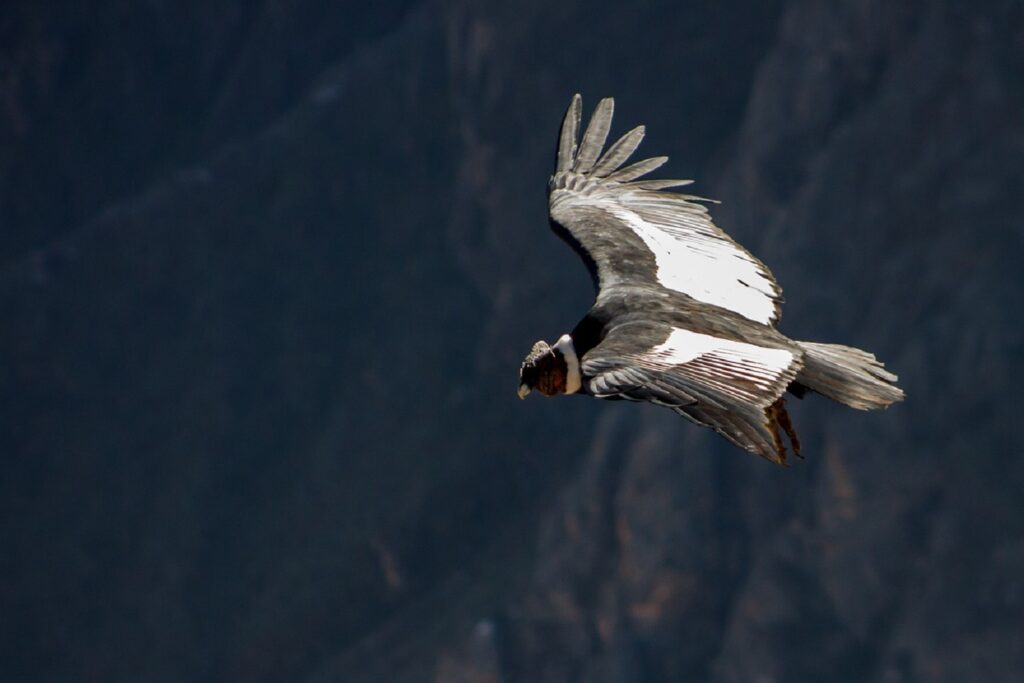
While the Wandering Albatross is the largest flying bird, the largest bird of prey is the Andean Condor. This bird lives throughout South America, including Ecuador, Bolivia, Colombia, and Chile. It can reach 3-4 feet in length, weigh up to 33 pounds, and has a wingspan of 10.5 feet.
The Andean Condor is primarily a scavenger, though they hunt some animals when necessary. For example, they are known to eat newborn cows and goats and have been seen carrying other small animals, like mice. Like other condors, they’re very social and form long-lasting friendship bonds.
What is the Largest Bird of Prey in North America?
The California Condor is the largest bird of prey in North America. It lives throughout many parts of California, Utah, and around the Grand Canyon. While they are extremely endangered, they are carefully protected and bred in an attempt to increase their numbers.
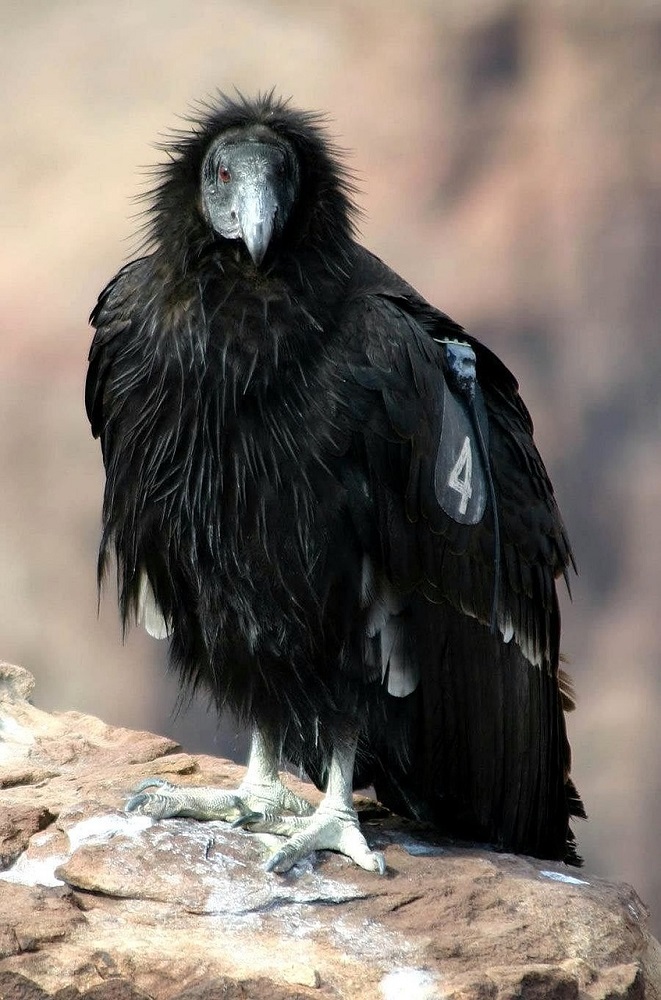
If they do ever become extinct, the Golden Eagle will take their place as North America’s largest bird of prey. They have a 78-inch wingspan and weigh around 7-14 pounds. Yet, amazingly, they can spot potential prey up to one mile away, thanks to their impeccable eyesight.
What’s the Largest Crane Bird?
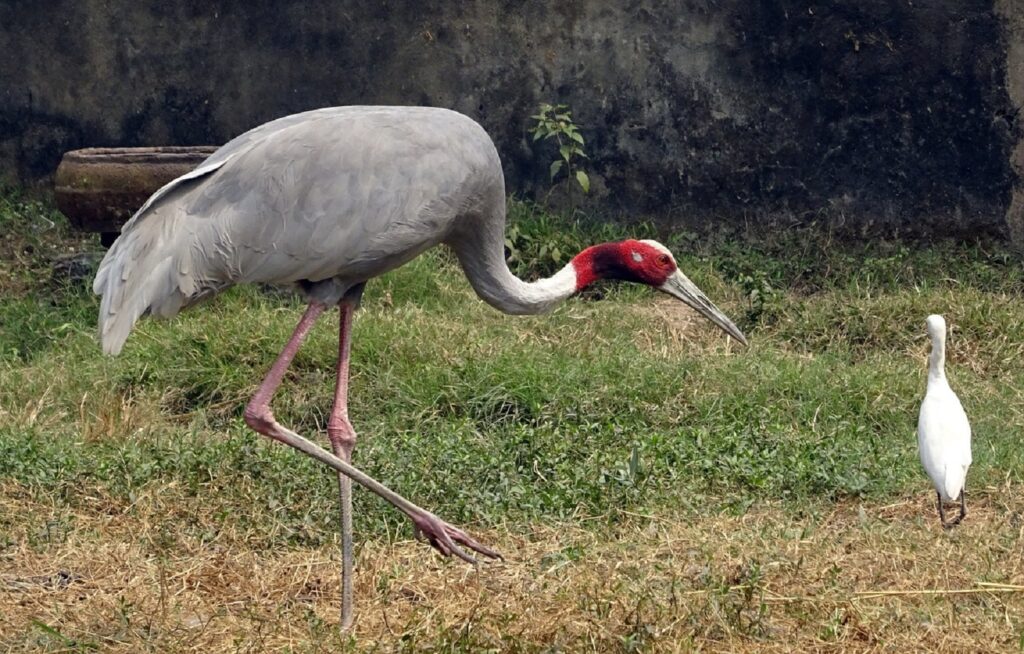
Cranes are beautiful birds with a delicate body and incredible size. The largest crane species in the world, Sarus Crane, is considered sacred by many religions and can stand up to nearly six feet tall. They weigh between 15-17 pounds, thanks to their thin bodies.
They also have one of the largest wingspans in the world, one that stretches up to 8.2 feet wide. Common throughout India, Australia, and Southern Asia, they are also considered vulnerable. The ancient Hindu poem, Ramayana, was inspired by a hunter killing a Sarus Crane.
Which Bird Lays The Largest Eggs?
The ostrich makes one last appearance on our list, which is impossible to avoid when talking about the biggest birds in the world. They lay the biggest eggs in the world, eggs that are about five inches wide and six inches long and weighing over three pounds or more, depending on the egg.
These eggs are considered a delicacy in continents with ostriches, as they can feed multiple people and create delicious egg-based meals. They are also sold to many other countries worldwide and have a gamier taste than chicken or turkey eggs, giving them a unique flavor profile.
Which Bird Makes the Largest Nest?
The world’s largest single nest was built by a pair of bald eagles in St. Petersburg, Florida. Discovered in 1963, this nest was over nine feet wide and 20 feet deep and weighed about 4,409 pounds. However, the Social Weaver may make the most extensive social nest of any other bird species.
This small bird (no more than 5.5 inches and under one ounce) spreads throughout Africa and creates incredibly largest nests. They may weigh more than 2,000 pounds, contain over 100 chambers, and are so big that they are known to cause trees and electrical poles to collapse when waterlogged.
The World’s Largest Bird Statue
If you ever travel to Kollam, Kerala, you’ll get the chance to see the unique Jatayu Adventure Centre with its epic bird statue. Dedicated to a character from the mythological book the Ramayana, this statue is 200 feet long, 150 feet weight, and 70 feet tall, making it the key feature of the park.
Created by renowned director and screenwriter Rajiv Anchal, this statue includes layered feathers, beautiful details, and amazing features you wouldn’t expect on such a statue. Obviously a labor of love, it’s something that is worth traveling to see if you ever get the chance.
The World’s Largest Bird Feeder
The Guinness Book of World Records officially names the largest bird feeder as holding up to 760 pounds of food with a broad overall shape and size. Created by William Greene of Sulphur Springs, West Virginia, this feeder holds black oil sunflower seeds, mixed fruits, nuts, and millet.
Greene spends hundreds of dollars almost every week to keep his bird feeder operating. It also regulars regular upgrades, such as painting and careful repairs, to avoid damage. Greene also regularly cleans up large volumes of bird fecal matter to keep his feeder from getting damaged by its acidic nature.
The World’s Largest Bird Cage
Casey, Illinois, is a small town (around 2,700 people) that has the unique distinction of holding eight of the world’s most significant objects. Resident Jim Bolin decided to build these items to bring some more attention to his struggling town. These items include the world’s largest bird cage.
While the many articles covering this topic didn’t discuss the actual size of the cage, they did show pictures of people standing inside of it easily with plenty of overhead room. It looks to stand somewhere between nine to 10 feet and is probably 15 to 20 feet wide.
Related post: The Coolest Birds